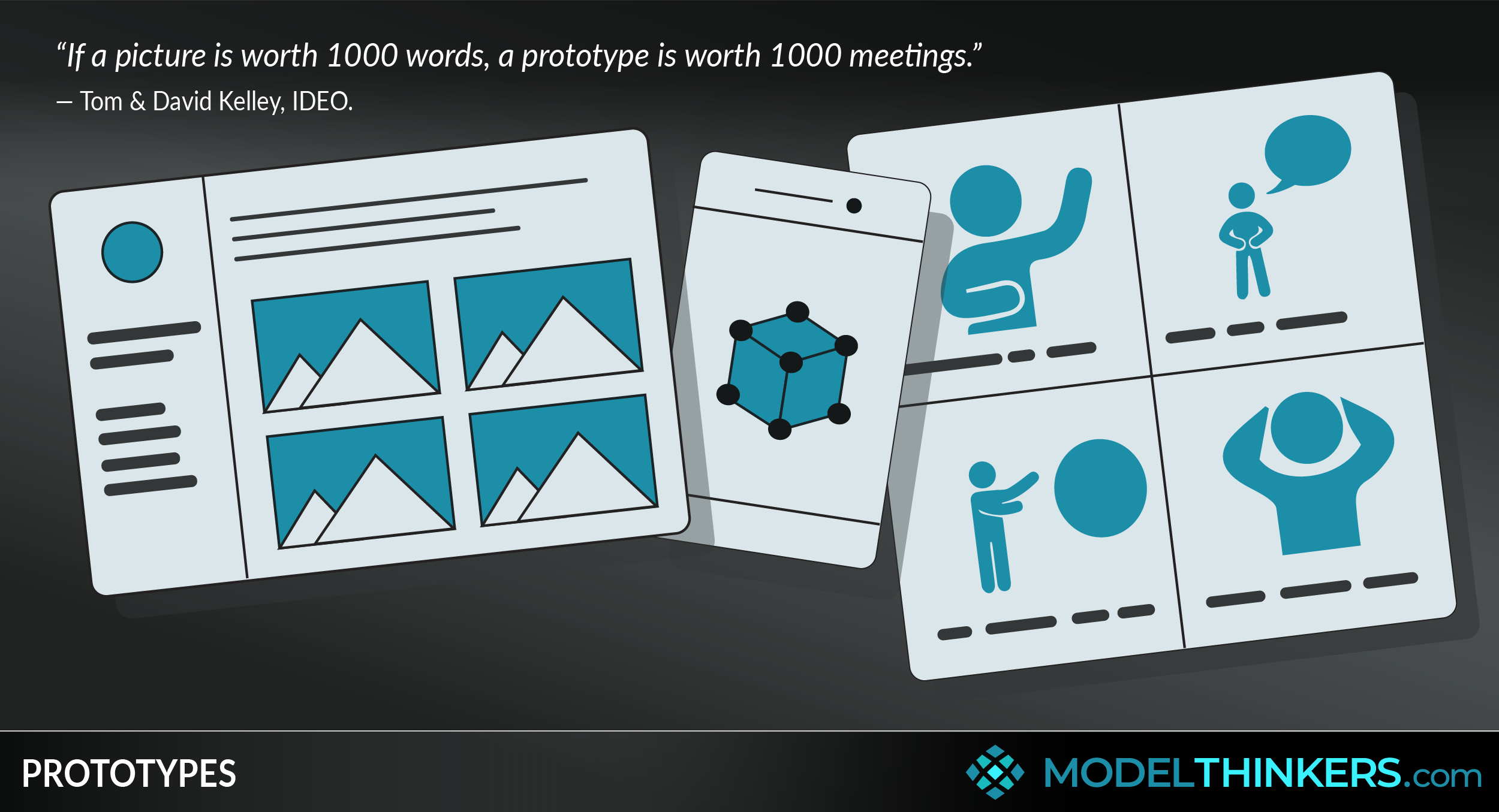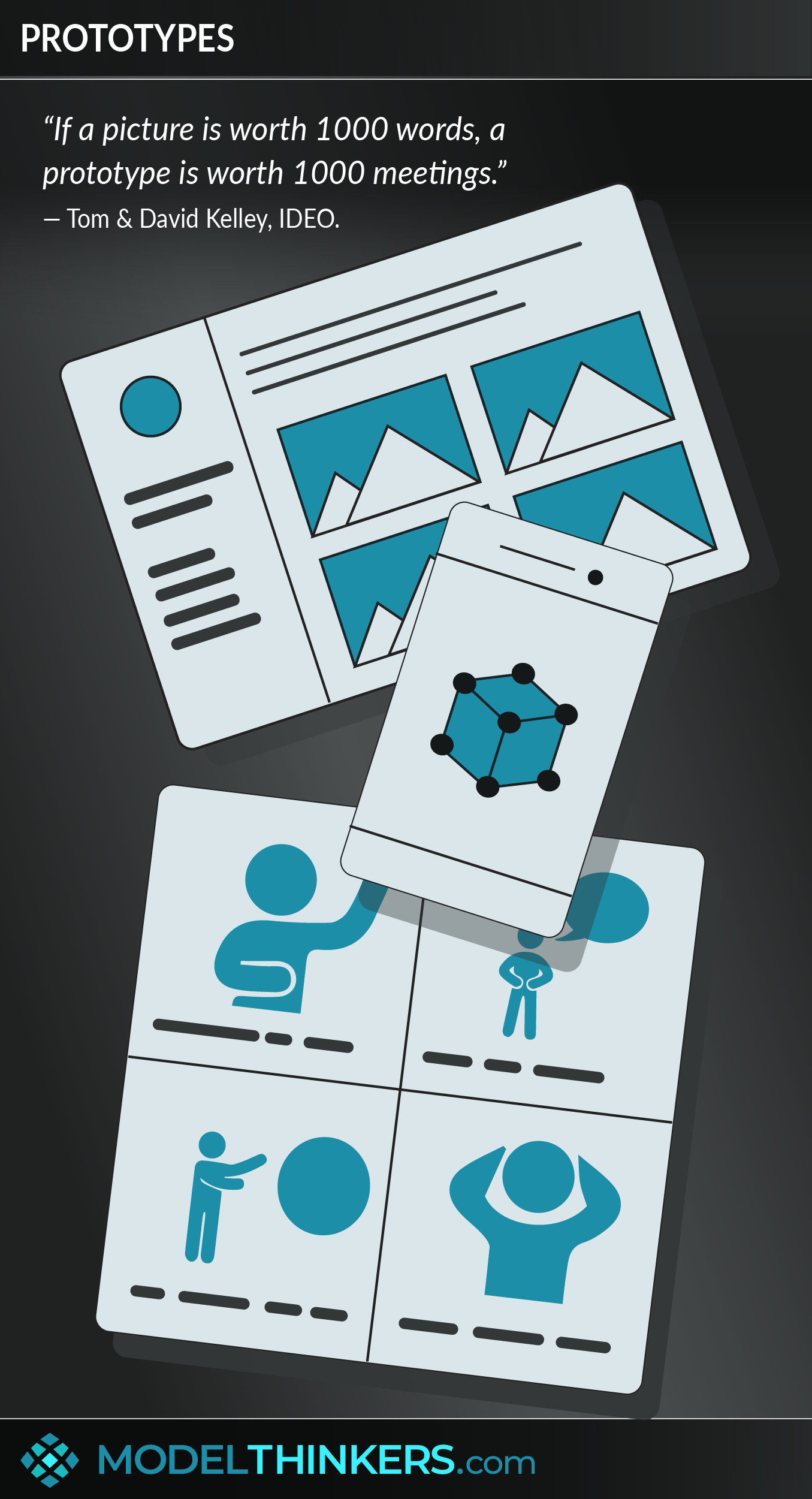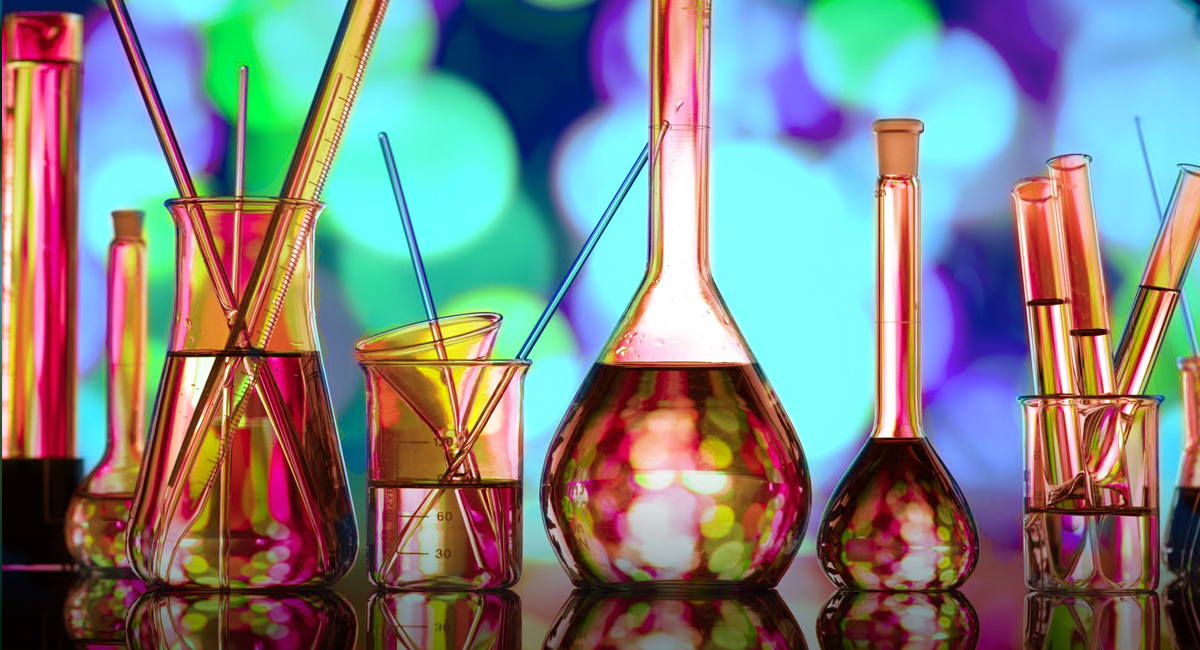

 0 saved
0 saved
 19.4K views
19.4K views








“If a picture is worth a thousand words, a prototype is worth a thousand meetings.” — Tom & David Kelley, IDEO.
A Prototype is an early sample, mock-up, or working model of a product used to gain quick feedback as part of an iterative design process.
PREVIEWING EXPERIENCES.
Similar to a Minimum Viable Product (MVP), a Prototype helps users to preview an experience of a product with little cost and risk. It can be used to validate a concept and/or to gain valuable feedback which will inform future design cycles.
Unlike a MVP, Prototypes are used as part of the design process and do not need to be 'viable' as stand-alone products that are taken to market. That means that rather than testing the 'whole', Prototypes can also be used to target specific elements of a potential solution. Keep this in mind, particularly if you want to run Riskiest Assumption Tests rather than build an MVP.
PREVIEW & TEST ANYTHING.
Prototypes are a useful tool in a complicated world. You might apply the approach in your business, for product design, or consider how you might Prototype and test other things in your work and life when faced with ambiguity. Unsure if your website idea is a strong concept? Try creating an interactive wireframe to test with your audience. Not sure whether to move cities? Consider renting in the area first.
For best results, use a prototype to fast-track how you understand and learn about your audience. That means selecting an appropriate test audience carefully, and curiously observing how they use and react to the prototype rather than trying to defend or explain your approach.
LEVELS OF FIDELITY.
Prototypes can use different levels of fidelity and investment. One tip is to match the level of fidelity to the maturity of your idea — so a new concept could be a sketch, while a developed idea might be previewed as a more robust interactive walk-through. That said, there is no set rule and an alternative approach is to simply invest the minimal amount of effort and resources possible to adequately preview the experience you wish to test.
Prototypes can take countless forms, all with the underlying principle of testing an idea without having to build out the entire solution. Some prototype approaches include:
- Storyboard: a low fidelity approach, describing an experience through a story, typically of a user experience. It might be considered as a visual journey map.
- Paper prototype: another low-fidelity approach, often used for interface and web design. Consisting of screens created on paper, allowing a user to simulate an interaction with the design by pointing to parts of the pages they would use and the testers pulling up new paper screens as required.
- Lego prototyping: also low fidelity, this approach was used by IDEO to quickly test ideas, with the ability to quickly build out concepts. Other variations use clay or other simple modelling tools.
- Roleplay: this can bring a storyboard to life, playing out a planned experience to test it with specific users.
- Simulation: generally a more high-fidelity approach, generally consisting of a simulated environment and usage, to see how a computer-modelled prototype of a product performs under different conditions.
- Vertical vs horizontal prototype: rather than the form, this refers to what is being tested. Horizontal prototypes present a broad range of features which might not be fully implemented. Vertical prototypes present a narrower set of features but they are executed from start to finish.
- Functional or working prototype: a workable prototype that can be clicked on (in a digital context) and preview basic navigation and functionality. It might be high fidelity or developed as a simple wireframe. This can extend to 'rapid prototypes' in manufacturing, which are typically 3D printed parts of machinery or tooling that can be quickly previewed and tested.
IN YOUR LATTICEWORK.
Prototypes are inspired by the testing hypotheses from the Scientific Method and recommended as commonly found in Agile Methodology, the WRAP Decision Process and Design Thinking. Before you jump to using Prototypes, consider exploring the Cynefin Framework to help assess when they will be most impactful.
Prototypes are often developed between the formation of an initial concept and delivering a Minimum Viable Product (MVP). They can also be used with a different emphasis as part of a Riskiest Assumption Test. A recommended way to test the reaction and impact of a Prototype is with a Split Test. Prototypes are a simple method of reducing your Return on Failure when exploring a new idea or approach. Finally, it's worth looking at how Obama's Chief Data Scientist applied Prototypes in Patil's Project Principles.




- Prototype early and often.
Use prototyping at all stages of a business or design process, to quickly disprove or validate your assumptions and gain more customer and market information. Implement it as part of an iterative design process that implements continuous feedback loops.
- Consider using a ‘RAT’ to inform your prototype.
No, not animal testing. A RAT is a riskiest assumption test, that aims to target the parts of your approach that are on shakiest ground, or that you partly expect not to work. Targeting your prototype around these riskiest assumptions means potentially narrowing your prototype in the first instance.
- Create branched prototypes to test hunches.
In addition to testing riskiest assumptions, you can use prototypes to test hunches, of possible new opportunities. This might even include creating a prototype to test variations of your current product roadmap and deciding whether it is worth further investigation.
- Choose your audience and context carefully.
There is no single answer in choosing an audience to test a prototype. Ideally, it should be a diverse group representing key elements of your target audience. Including extreme users, either early adopters or laggards might provide further insights. In addition, consider the context in which they will experience the prototype and aim for as authentic as possible.
- Frame testing as an opportunity to learn and understand your audience.
Rather than presenting a prototype to an audience group and feeling the need to defend your approach against misinterpretation, see the process as an opportunity to more deeply understand your audience. When the prototype is framed as a prop for you to gain a deeper understanding of your audience it creates a more open, curious environment. Support this further by asking lots of ‘why’ questions, rather than justifying a decision.
- Observe users.
Rather than simply asking opinions, ask users to experience the prototype and observe what they do. Look for surprising behaviour or points of friction that might warrant deeper investigation and/or testing.
- Start as low fidelity as possible, then iterate towards your end goal.
The earliest prototype might be a sketch, a lego model or a story. From there, iterate and develop it, with growing amounts of design fidelity as you grow in certainty
The main challenge of prototyping lies in testing and gaining feedback on an incomplete or deceptively different product or approach than your end goal. As such, early prototyping might seem to invalidate an idea when, with the right design and marketing, it might still resonate with users.
Prototyping also can backfire, particularly reputationally, when user expectations are not managed effectively. That is, users knowing that a prototype is an early, rough version as part of a testing loop rather than representing the actual product.
Atari.
The image below is of the Atari computer prototype, built before the launch of the now-iconic platform.

Prototypes are a useful tool as part of an iterative design process, such as with design thinking or agile methodology. They’ve been used widely in engineering, manufacturing and software development.
Use the following examples of connected and complementary models to weave prototypes into your broader latticework of mental models. Alternatively, discover your own connections by exploring the category list above.
Connected models:
- Design thinking: which specifically includes prototypes as part of its process.
- Agile methodology: in the iterative approach to deliver value.
- Minimum viable product: in delivering a version of the product that customers will purchase.
- Feedback loops: as a fundamental part of prototypes.
- The scientific method: theoretically, prototyping and continual testing is aligned with the scientific method.
- Cynefin framework: which calls for prototyping as part of it's exploratory approach.
Complementary models:
- A/B testing: to test variations on product design with multiple prototypes.
- High velocity decisions: supporting a bias to action.
- Parkinson's law: timeboxing development of early prototypes.
There are no clear and named originators behind prototypes, it's a practice with a long history in a number of fields. The term itself comes from the Greek word prototypon, which means ‘primitive form’.
 My Notes
My Notes
Oops, That’s Members’ Only!
Fortunately, it only costs US$5/month to Join ModelThinkers and access everything so that you can rapidly discover, learn, and apply the world’s most powerful ideas.
ModelThinkers membership at a glance:






“Yeah, we hate pop ups too. But we wanted to let you know that, with ModelThinkers, we’re making it easier for you to adapt, innovate and create value. We hope you’ll join us and the growing community of ModelThinkers today.”



























































































